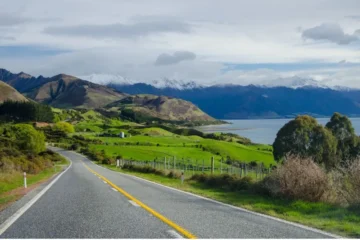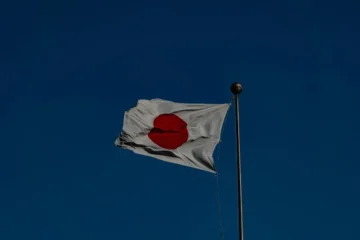New Zealand is gearing up for a busy harvest and tourist season, and it’s not just the vineyards and orchards that are getting ready. Starting December 8, 2025, the country will roll out two new visa pathways designed to bring in much-needed seasonal workers. Whether you’re a skilled harvester with years of experience or someone simply looking for a few months of outdoor work in the Southern Hemisphere, these visas could be your ticket to earning, exploring, and contributing to one of the world’s most scenic workplaces.
Key Takeaways
Here’s what you need to know about the Global Workforce Seasonal Visa (GWSV) and the Peak Seasonal Visa (PSV), and why they might just be the most flexible short-term work options New Zealand has offered in years.
Why New Zealand Is Introducing Two New Seasonal Work Visas
Labour shortages aren’t new to New Zealand’s agricultural and tourism sectors, but the past few years have made the problem harder to ignore. Between pandemic disruptions, low unemployment rates, and competition from other seasonal work destinations, employers have been struggling to fill roles in horticulture, viticulture, tourism, and food processing.
The government’s answer is a more targeted approach: two seasonal visas under the Accredited Employer Work Visa (AEWV) framework. These new visas aim to give employers more flexibility, especially during peak seasons when demand for workers skyrockets. It’s a way to keep fruit from rotting on trees, grapes from going unpicked, and tourists from waiting too long for their flat whites.
But there’s more to it than plugging labour gaps. Seasonal workers bring fresh skills, international perspectives, and in many cases, a willingness to take on physically demanding roles. By making it easier for workers to enter and re-enter for short-term stints, New Zealand is hoping to create a reliable seasonal workforce without undermining local job opportunities.
Recognised Seasonal Employer (RSE) Visa: What Workers Should Know
The Recognised Seasonal Employer (RSE) visa isn’t disappearing, but it’s no longer the only option. The RSE scheme has been a cornerstone of New Zealand’s seasonal work program, especially in horticulture and viticulture. Workers on an RSE visa are typically brought in by accredited employers to pick, pack, and process crops during peak harvest times.
Also Read: Is Getting a Skilled Work Visa in New Zealand Now Easier?
For 2025–26, the RSE framework remains focused on these sectors, with a maximum stay of up to seven months in a year. Accommodation is usually organised by the employer, and wages must meet legal requirements. While it’s a tried-and-tested pathway, it’s also tightly controlled: employers must be officially accredited, and workers can only do the specific job they were hired for.
The new GWSV and PSV visas are designed to complement, not replace, the RSE system, offering more flexibility for both employers and workers while still keeping seasonal work genuinely temporary.
Horticulture and Viticulture Seasonal Work Visa: A Fresh Opportunity
The Horticulture and Viticulture Seasonal Work Visa, now effectively covered by the PSV and GWSV categories, is where things get interesting. The Global Workforce Seasonal Visa (GWSV) is aimed at skilled seasonal workers with a proven track record at least three seasons of relevant experience in the past six years. This visa allows stays of up to three years, provided you take at least a three-month break outside New Zealand each year.
On the other hand, the Peak Seasonal Visa (PSV) caters to entry-level or lower-skilled roles. With just one season of relevant experience in the past three years, you can work for up to seven months before taking a four-month cool-off period. It’s designed for industries that need quick, large-scale labour boosts, such as fruit picking, food processing, and even some tourism roles.

The big draw? Neither visa has an English language requirement, and both are exempt from the labour market test. That means less paperwork and faster approvals, music to the ears of both employers and job seekers.
Eligibility Rules for Seasonal Workers in 2025–26
While these visas are open to a wide range of applicants, there are still clear eligibility criteria. First, nationality: there’s no universal restriction, but applicants must be from countries with which New Zealand maintains seasonal worker agreements or have prior relevant experience.
For the GWSV, you’ll need three seasons’ experience in the past six years. For the PSV, just one season in the past three years is enough. Age limits aren’t fixed, but you must meet health and character requirements, meaning you’ll need to pass medical checks and have no serious criminal record.
Another important detail: visas do not allow partner or dependent visas. If you’re coming to New Zealand for seasonal work, it’s a solo mission. Employers, however, must be accredited or Work and Income–endorsed, ensuring only reputable businesses can hire seasonal workers.
How and When to Apply for These Seasonal Visas
Applications for both the GWSV and PSV open on December 8, 2025. The process is fully online, and because these visas fall under the AEWV umbrella, you’ll need a job offer from an accredited employer before applying.
Once you’ve got your offer, you’ll submit your application with proof of relevant work experience, a valid passport, medical certificates, and (for PSV applicants) proof of health insurance. The absence of an English test or labour market check should make the process quicker, but that doesn’t mean you can slack on paperwork; missing documents will still slow you down.
Also Read: How Can You Get New Zealand Citizenship Faster in 2025?
Processing times will vary, but seasonal demand means it’s best to apply early. With many employers already lining up their peak-season hires months in advance, waiting until the last minute could leave you watching the harvest from the sidelines.
Benefits and Challenges for Foreign Workers in New Zealand’s Seasonal Jobs
The benefits of seasonal work in New Zealand go beyond the paycheck, though that’s certainly a motivator. Many seasonal workers enjoy competitive wages, overtime opportunities, and the chance to work in stunning outdoor settings. It’s also a way to build agricultural, food processing, or tourism skills that can open doors back home or in other countries.
However, the work can be demanding. Long hours on your feet, physically intensive tasks, and unpredictable weather are all part of the package. And because these jobs are tied to seasonal cycles, income is limited to the work period; you’ll need to plan for the months you’re not employed.
Still, for many, the chance to live and work in New Zealand, meet people from around the world, and experience the country’s culture firsthand is worth the trade-off. These visas may not be a pathway to permanent residency, but they’re a solid step into the Kiwi workforce and possibly into longer-term opportunities.
In short: If you’ve got the skills, stamina, and flexibility, New Zealand’s new seasonal visas could be your next great working adventure. The key is to prepare early, lock in an accredited employer, and be ready to dive into the country’s busiest and most rewarding work seasons.





